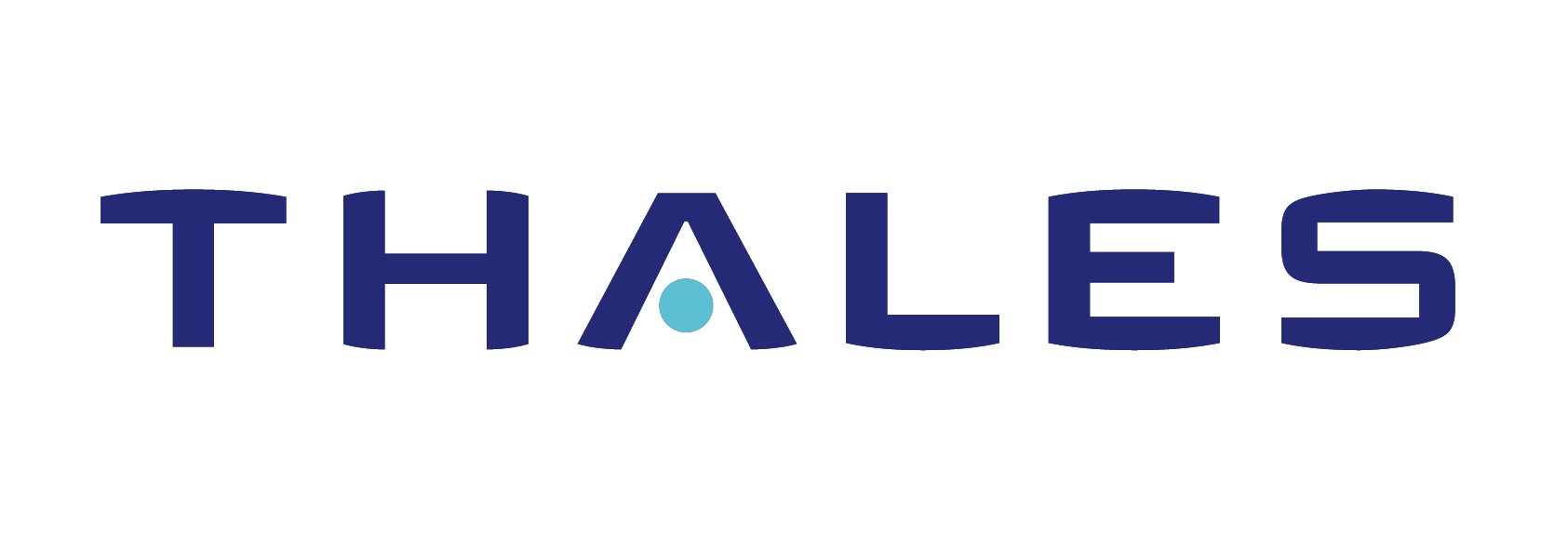You can find below the 2019 Position Papers of our partners :

« How to achieve superiority on the digital battlefield? »
It's more than digitalisation. It's more than transformation. The defence sector is going through a revolution. As we stand today, the reasoned and adequate development and adoption of new technologies already ensure the operational superiority that allows our armed forces to guarantee peace and sovereignty. For many years, Thales has been preparing to step up to the formidable challenges of warfighting in tomorrow's increasingly digitised and connected battlespace.
Innovation and dual technology expertise are written into our genetic code. This is how we can harness the potential of civil technologies and endeavour to bridge the gap between civil and defence through constructive interaction and dialogue. The Digital Factory and Station F, where Thales is the lead on cybersecurity, are early illustrations of these new types of collaboration and how they not only deliver results but are crucial to the ability to stay ahead of the curve in terms of technology.
Massive investment in connectivity, Big Data, artificial intelligence and cybersecurity will bring substantial efficiency gains in military operations. These technologies offer many practical benefits, including a connected collaborative combat capability, which is a key goal of the Future Combat Air System (FCAS), but also improved security and safety for military personnel. Here are a few examples of how these technologies can support our fundamental strategic capabilities:
- Providing more effective intelligence. AI is not a new phenomenon, but the convergence of several factors — mature algorithms, computing power and data volumes — has unlocked ever greater investigative potential. It takes experienced military personnel an average of 300 hours to analyse reconnaissance images of an area of 3,000 km²; with an AI-assisted image recognition system, that volume of data can be analysed in real time.
- Developing the potential of the connected collaborative combat taking shape in the Scorpion programme. Relying on AI, Big Data and cybersecure defence clouds, our augmented C4I[1] system of systems enables connected collaborative combat in joint forces operations, and provides the connectivity needed to support secure end-to-end services for the different air platforms.
- Supporting predictive maintenance. Using embedded sensors to log usage of our equipment, AI promises to drive efficiency gains in through-life support and fleet management, which is a priority area for our armed forces.
With exploding volumes of unstructured, heterogeneous data, the ability to control data assets and ensure their integrity is also an important differentiator. Conventional technologies are no longer sufficient to capture, store, qualify, prioritise and process these huge volumes of data. Today, Big Data analytics is part of the solution, making it possible to get the right data at the right time and transform it into useful information.
As a result, the defence industry is transforming itself to meet the new requirements of our servicemen and women as defined by the Ministry for the Armed Forces and in line with the priorities of the Defence Innovation Agency (Agence pour l'innovation de défense).
Because the combat ecosystem is transforming, there is a need for digital technology professionals and operational customers to reflect jointly on the digital transformation, and to fully understand the challenges of training, interoperability and cooperation with our European and international allies.
Decision support, collaborative combat, tactical cyber, logistics… the prospects are exciting and full of promise, but they must not conceal a number of important constraints linked to the use of new technologies. Our ability to work within those constraints and offer tangible solutions in a responsible, cybersecure and ethical manner is critical for the future.
Cybersecurity is now a core functionality of all military systems. Defence systems are more and more interconnected, and as such they need to be cybersecure by design to withstand exponential growth in the threat environment, and to guarantee that the decision chain continues to function and can be trusted at all times. Our system safety, strategic information and freedom of action are at stake.
But beyond these technical concerns, ethical considerations must be central to our approach, just as they are in the policies adopted by the armed forces. How is it possible to operate on a digital battlefield, deploying systems with ever greater levels of intelligence and autonomy, without addressing the issue of accountability? We advocate an approach to artificial intelligence that we call Thales TrUE AI — Transparent AI, where users can see the data used to reach a conclusion; Understandable AI that can explain and justify the results; and Ethical AI that follows objective protocols and laws, and protects human rights.
What's at stake here is the moral responsibility of each individual and our ability to unleash human potential through constructive interaction with machines. The image of "killer robots" fomented by certain parties misses the point.
Trust is not a given — it has to be earned. Trust does not depend on tools and systems but on the context in which they are deployed and the limits we set on their use. Our Charter on Ethics and Digital Transformation draws our red lines for military applications: "augmenting" humans to help them make the best choices, while always ensuring that they stay in control of the final decision, is what guides our work on a day-to-day basis.
By leveraging the potential of digital technologies with discernment and responsibility, the defence sector is stepping up to the compelling challenges of contemporary conflicts. The goal is to develop systems for a context like no other, a context that demands absolute efficiency, constant adaptability and resilience, and unadulterated consciousness. In short, our common objective must be to use digital tools to fight smarter in a digital battlespace. Let us step up to our responsibilities on this revolutionised battlefield by offering a vision of the theatre of operations and a range of appropriate solutions that we can be proud of.
[1] Computerised Command, Control, Communications and Intelligence

Weapons manufacturers and the challenge of complex systems
Safran, the #3 global aeronautics group (excluding aircraft manufacturers), is also a leading player in the defense industry. It must adapt its offering to constantly evolving warfare in a world subject to shape-shifting threats. This requires innovation. We reinvest close to 10% of our defense-related revenues in innovation, which makes defense proportionally our highest R&D expenditure.
What is at the heart of today’s innovations? The need to “think system.” This requirement, which is at the core of a supplier’s work, is all the more demanding in that today, every system fits into other larger, increasingly complex systems. This means the idea is no longer to simply offer solutions for such or such a model. Beginning in the design phase of military engines and equipment, we need to anticipate their increasingly complex interactions with other air, land, sea and space components.
This new factor, in which our products are part of complex systems with multiple interactions, has at least three consequences on the way we envision design.
Firstly, ever-expanding digitization. This is necessary to rise to current operational challenges, which require more collaboration and a better perception of the tactical environment. Battlefield connectivity and increasingly sophisticated management of growing amounts of data are the direct consequence: the combat cloud, use of artificial intelligence and robotics, high-tech sensors, “augmented”, intuitive interfaces, etc. The technologies must fluidify the human-human, human-platform, and platform-platform interactions. This networked communication requirement was at the heart of FELIN, commissioned in 2010 and optimized through lessons learned. Today, connectivity is the cornerstone of Scorpion, and Safran, as a contractor along with Bull, is working on its communications system. Likewise, FCAS (the Future Combat Air System) is more than a combat aircraft. It consists of collaborative action solutions such as drone swarms, or air-to-ground effectors, in which Safran has proven its expertise with the AASM (air-to-ground modular weapon). It calls on ad hoc digital technologies that must satisfy operational reactivity and data security requirements.
The second consequence of the advent of complex systems concerns human resources. The weapons industry needs new skills, in particular those of system architects. Finding these skills is a major challenge. Safran has set up a high-level internal training program dedicated to the new defense industry professions such as system architects and those relating to Model Base Design. Our Group works closely with European engineering schools through structural programs designed to strengthen systems engineering programs in the EU.
Which brings us to the third consequence of battlefield networking: closer cooperation between all the players in the European defense community. The need for an international approach, encouraged by EU initiatives, is especially strong at a time when technological changes imply increasingly costly development. The Scorpion program is being developed in coordination with the French and Belgian armed forces. The design of the FCAS program fighter jet, initiated by the French and German governments—assigned to Dassault and Airbus Defence & Space for the design and to Safran and MTU Engines for the engine—paves the way to wider cross-border cooperation that will facilitate future use of the aircraft on a continental scale. At the Paris Air Show, Safran signed an agreement with the German firm Hensoldt and the Spanish company Mades to develop the gyrostabilized observation electro-optical system that will equip the European drone. The European Defence Fund encourages this type of collaboration, which should contribute to weapons harmonization and facilitate the collaborative engagement of allied forces. As the unique interface between manufacturers and users, and at a time when players are diversifying and becoming international, the French Defense Procurement Agency, DGA, plays a key role.
When speaking of changes in warfare, there is the technology, but more importantly, there are the women and men of the armed forces. Each year, and especially in 2019, where tribute was paid to those injured in conflict, the July 14th parade reminds us that weapons manufacturers are firstly dedicated to them. Our work must focus on their success in the field of operation. Our goal must always be to improve their safety and effectiveness by providing ever more advanced and easy-to-use equipment. This continual improvement implies the development of complex systems that enable increasingly coherent and efficient operations for the benefit of our soldiers, their lives, and the values they fight for.



